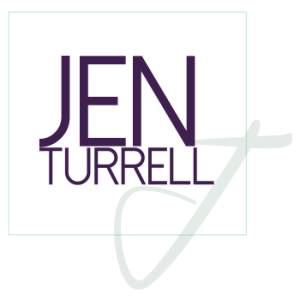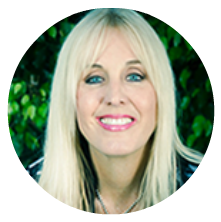Financial Fluency Episode #11: Saving For Life
Hello, and thank you for joining me today on Financial Fluency. Today I want to talk about saving for life.
You can listen in below and Tweet it out here
Savings is a really important part of anyone’s financial plan, and it is what I consider to be the paying ourselves part of our financial plan overall. I know that people who get a salary either from a regular employment pay check kind of job or if you’re working for yourself and paying yourself a salary, it seems like the salary is what you get paid, but a lot of that gets used in the operating expenses of our daily life.
If you own a business you think of operating expenses for your business, yes, but when you look at your personal finances you also have a certain level of expenses just to operate your daily life at the level of income and at the standard of living that you’re used to living. All of that gets consumed.
What I think of as actually paying ourselves is what goes forward into the future for us to build the life that we want to live. Tweet That! 
Post Recession Retirement
Since the recession, a lot of us have changed how we think about the idea of retirement. Few people anymore think about going on a golf course or just going on cruises because we can see how difficult it is to get to a point in life where we have no earned income. There are a lot of ways to mitigate this; a lot of people that I work with end up adding additional income streams that can go forward into the future, things like:
- Royalties on books
- Royalties on music
- Rental properties that continue to have income, especially once the principal mortgage is paid off
There are a lot of ways to look at setting up your life to continue to have some income coming in – even after you are hopefully no longer needing to hustle – but for all of us, both because of our health and different circumstances in our life, we need to look at the possibility that there may come a point when we aren’t working in the same way that we are now.
I hope that a lot of us end up having some kind of retirement!
So if you at this moment do not have anything planned for retirement, I am planning on doing my next solo episode on investing for beginners, which really goes over IRAs, tax advantaged accounts and things like that. Right now I’m just going to talk about a regular savings account, because if you haven’t saved anything and if you don’t have an emergency savings, if you don’t have savings for curveballs, for things that occur a couple of times a year, it’s hard to jump straight to the IRA.
You really need some savings cushion in there because you don’t want to be pulling money out of an IRA once you put it in there. There are tax penalties and also trading fees, so once you invest something, you really want to leave it there for at least a year. If you trade something, if you buy and sell it within a single year, you end up with a different tax consequence than if you leave it for more than a year. You also need time to let that grow, you don’t want to be jumping in and out of retirement accounts or investment accounts, just pulling money in and out willy nilly.
Regular Old Savings
Looking at statistics, at least here in the United States, the people who tend to save most for the future traditionally have been those who had access to employer sponsored 401k type plans and retirement accounts, where the money was taken out of their pay check before the pay check ever arrived. They never really saw that money week by week and month by month as something that could be spent.
A lot of us don’t have access to those kind of accounts anymore, either because employers aren’t offering them, or because we’re now self-employed. What I would like to do is to set up the type of system that most closely mimics that for us.
Here’s How You Can Do It
If you have a pay check that arrives twice a month, say on the 1st and the 15th, on the 2nd and the 16th you set up an auto transfer into a savings account. That means that there is very little time to spend it before you’ve made that savings transfer.
If you are a sole proprietor, a small business owner who puts their income in their Schedule C, hopefully you’re already taking out the percentage you need for your quarterly estimated taxes before you transfer money into your personal money. If at the moment you don’t have separate accounts for business and personal, the start of 2016 is the perfect time to separate out those accounts, because you really do want to make sure that you’re getting those taxes covered for your small business before you’re paying yourself, and then from what you pay yourself, you can take your personal savings out of that.
That is something I want to stress for sure. If you haven’t been separating those accounts yet, do it now, go into the bank, get a separate account for your business so that you pay yourself a salary of some sort, or at least regular draws which you can take a percentage out of for personal savings.
A Cool Tool to Help You Save
If you find it difficult to figure out how much you should be taking each month in savings, you can either do a percentage of pay check or a percentage of fees, if you’re a freelance. If you find that difficult to anticipate so you can set up an auto transfer, another way to do it is to try out a new company called Digit.
I found out about Digit last summer and I signed up in June 2015.
What Digit does is they have some sort of algorithm that studies your spending habits. You hook it up to a single checking account, and after looking at your spending habits, it figures out the best times to remove small amounts of money here and there throughout the month so that you will notice it the least, and it will add up.
You always have the option to tell it to save more and you can add a five dollar recurring weekly or monthly transfer on top of it taking little bits out. If you do a few months, you like seeing the money accumulate and you aren’t feeling any pain from taking the money out of your account, you can tell it to increase. In the course of the seven or eight months I’ve been doing this, I think I’ve accumulated about $2800 in my Digit savings account.
This was a great surprise because I saw the little bits coming out here and there and they send you text messages to tell you your balance. They make sure they never overdraw you with their small recurring withdrawals and they actually promise they won’t make you overdrawn, but it also allows this money to accumulate bit by bit, and that’s really nice to see.
If you feel like you can’t set up a recurring transfer of a certain amount, go and try Digit. (This is my ‘refer a friend’ link where if you use my link, we each get something like a five dollar credit. Win)
I would love to hear what you think, so once you’ve given it a try, email me at jen@jenturrell.com. I read all of my emails and respond as much as I can. If I get several people asking me about the same thing I will totally do a show about that.
Coming Up Next
My next solo show will be about investing for beginners and looking at some of these new robo advisers as well as a company that uses the round up process of investing your money, where it rounds up the change on different purchase you make over time from a checking account. I’m doing some research on those right now and I’ve been testing them out myself. I’m excited to share them with you!
So once you’ve got an account set up for savings, either like I said with your bank’s auto transfer system or using something like Digit, let it build up for a while. Once you have enough for an emergency fund, we can start looking at taking some of that money as it saves over time and putting it into some kind of tax advantaged retirement account. That’s where big wins really happen for your future. You get the magic of compounding interest as well as making money off your pre-tax dollars, depending on which kind of tax advantage you choose, whether a Roth IRA or a traditional IRA, which means you are saving money from Uncle Sam.
You do have to pay it off later on, but that money stays whole without the taxes being taken out. It can build over time and you only pay taxes on the other end when you withdraw if you do a traditional IRA, or it’s the other way round if you do a Roth IRA and you pay the taxes now, but then all of the growth in the future is tax free.
So we’ll be going over that in two weeks after we get this and my next interview show out, and I would love to hear from all of you. Thank you for joining me again, and if you want to join my mailing list, please go to jenturrell.com and sign up on the pop-up, where you’ll get a lot more tips and tricks and articles from me. Thank you for joining me, I’ll talk to you soon.
Mastering Money Matters
What if managing your money and feeling wealthy was easy?
Imagine going from feeling sick to your stomach every time you have to pay a bill, to having a system that pays all of your bills on time, and shows you at a glance where all of your money is and where it is going.
Mastering Money Matters will show you a new way of looking at your finances so you can set up your systems, enjoy your money, and stop worrying about your next bill.
If you’ve been desperately avoiding looking at your finances and hoping it all just magically works out – money comes in, it doesn’t run out, and you have enough for a bit of extra spending – enroll in Mastering Money Matters today.

